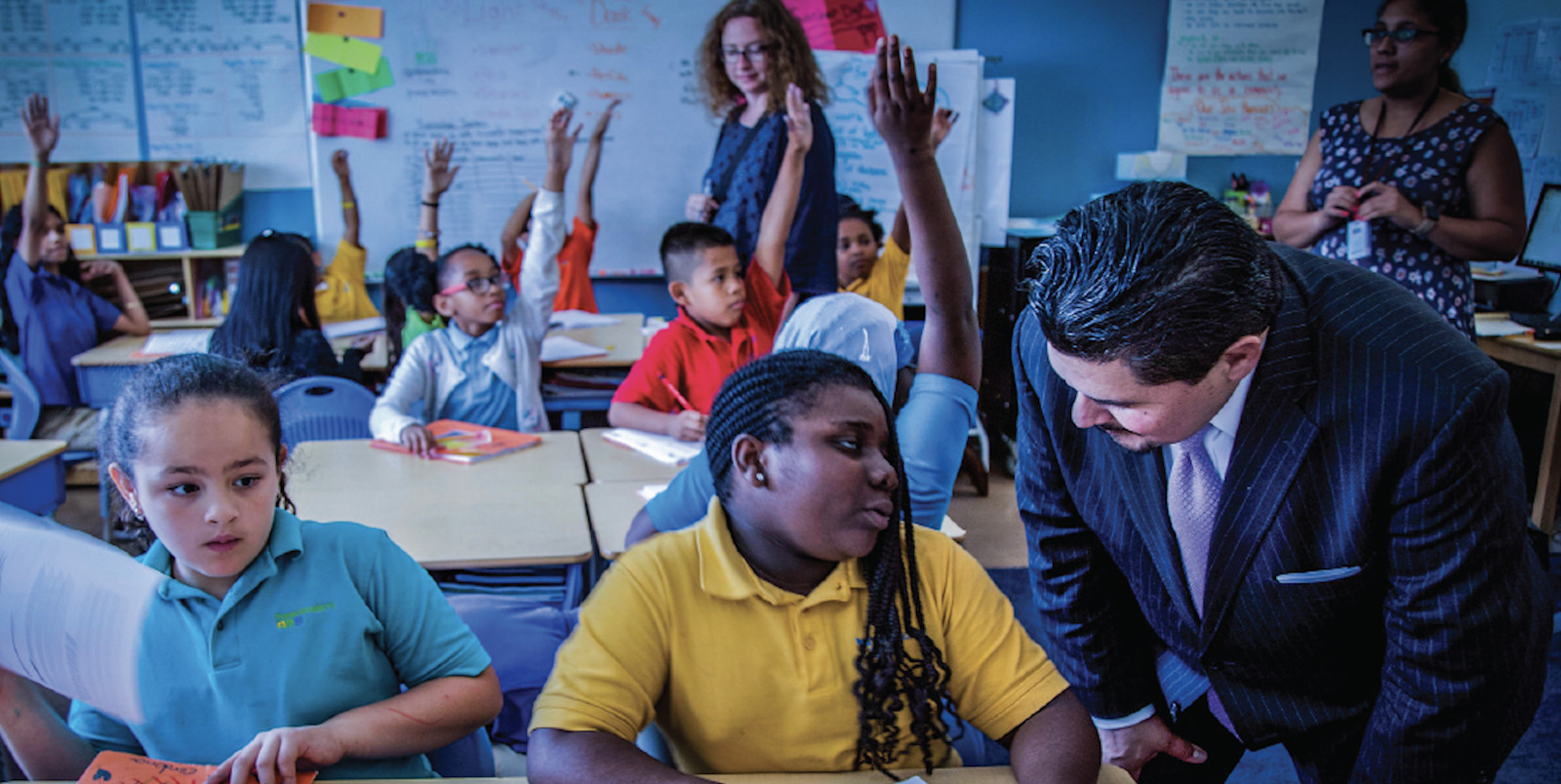Can Digital Learning Be Culturally Responsive and Equity-Based? Yes.

This article originally appeared in Urban Matters, a publication by our colleagues at the Center for New York City Affairs at The New School.
The most dramatic story of the just-ended New York City school year was, not surprisingly, the pandemic-required transition of 1.1 million students and 75,000 educators to exclusively on-line learning. That overshadowed less dramatic education news, which was in many ways of comparable importance: Covid-19 interrupted the school system’s nascent efforts to implement a distinctly new approach to equitable education – one more culturally attuned and attentive to recognizing and building on the lived experiences of the city’s students, especially communities in poverty and of color. If they aren’t careful, the City might sacrifice their commitment to educational equity in the name of emergency modes of on-line learning. It doesn’t have to be that way.
In our just-published report “Learning Equitably, Digitally, and Well,” my colleague Nicole Mader and I examined the links between these two developments, and how they will continue to play out and influence one another when the next school year begins in September. As the report’s title suggests, we came away believing strongly that a renewed commitment to fostering equity in learning – one that can be applied equally in on-line and face-to-face classrooms, the former certainly being with us in some form in the fall – is key to student success. That’s especially true given the profound personal and social upheavals in the lives of many New York City students this past spring.
At the point when the pandemic hit, schools were in the process of putting in place a professional development program for teachers and administrators focused on combatting systemic inequity. It is called “culturally responsive-sustaining education,” or CR-SE. In a nutshell, CR-SE promotes a view of teaching that recognizes diversity and cultural difference as assets and sources of knowledge. It also acknowledges and seeks to rectify the social and economic factors that perpetuate social injustice and inequality. CR-SE, one prominent education researcher writes, emphasizes “the importance of being in a relationship and having a special emotional connection to the student in order to create a safe space for learning.”
Can you create that kind of safe space, that more intimate and individualized teacher-student relationship, via on-line learning? Actually, and perhaps counter-intuitively, our answer is “yes.” There are ripe areas of intersection between CR-SE and remote learning (or the “blended” learning that uses instructional technology both inside and outside the classroom). And there are important ways CR-SE can improve remote and blended instruction.
A key finding of our report is that the ever-vital teacher attention to student social-emotional needs becomes absolutely crucial during a major public health crisis and its attendant economic upheaval. As part of our research we conducted in-depth video and phone interviews with dozens of the students, teachers, and parents who have lived through the past three months of remote on-line learning in New York. In the process we learned that creative and caring teachers took advantage of on-line instruction tools to focus first on students’ social-emotional needs during times of deep personal and familial stress, and then attend to necessary academic content and skills.
For example, a parent of a Bronx 2nd-grader told us about how her daughter’s school used video conferencing to attend to individual students’ needs: “The teachers are asking kids how they’re feeling for the day, kids admit how they’re doing emotionally, if they’re hungry…. The teachers are really in tune with the differences in their students. You can see when they’re having an issue with an individual kid, they move them into a [video conferencing] breakout room to talk with the kid and the parents.”
Emotional safety is a prerequisite for many students’ academic success, pandemic or not. CR-SE is a key way the City was addressing both students social-emotional and cultural needs. But what does the research on remote and blended learning say about CR-SE?
That’s where it gets really interesting. The research on remote and blended learning says precious little about CR-SE, explicitly. However, the academic research does suggest strongly that such models succeed best when teachers approach students as individual learners, giving them the chance, for example, to initiate and conduct their own inquiry-based projects. Such personalized and inquiry-based models of learning are very conducive to CR-SE frameworks. And what several school principals said in their interviews with us is that the best on-line instruction they saw this spring came from teachers putting a personal stamp on their classes and connecting with their students in the process. At its heart, CR-SE challenges teachers and students to honor the persons involved, no matter what side of the screen they are on.
Learning such lessons from the searing experiences of the past three months, the City’s Department of Education (DOE) should think about creating or encouraging CR-SE-informed personalized remote learning models for the next school year. Such models should build in more space for teachers and students to honor one another’s personal passions and cultural gifts, to pursue their own interests, and to define their own instructional goals that are as relevant to students’ lives as they are rigorous to teachers’ standards. Even the basic technologies currently available to schools can realize such models. What’s essential is that teachers have support in putting CR-SE first in their planning, assured that the academics can be addressed better when students’ cultural experiences are honored first.
There is still time to take the lessons learned from this spring and to act on them. In the coming weeks and months, essential decisions will be made that will affect the trajectories of children and their families for generations. That’s no hyperbole. And the good news is that it’s still possible to help all students learn more equitably, digitally, and well.
Please Post Comments